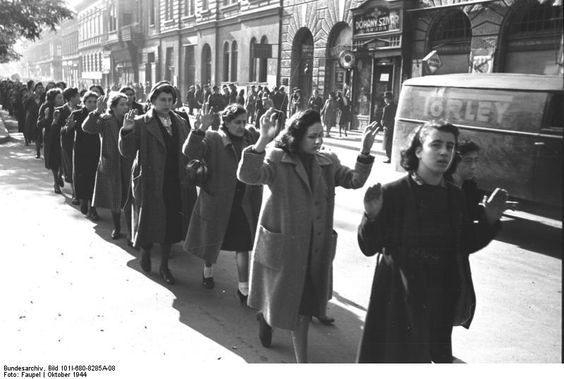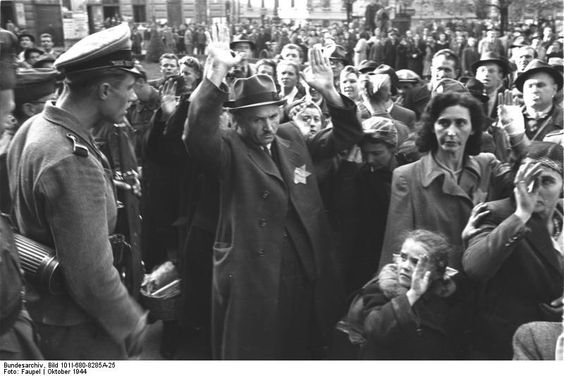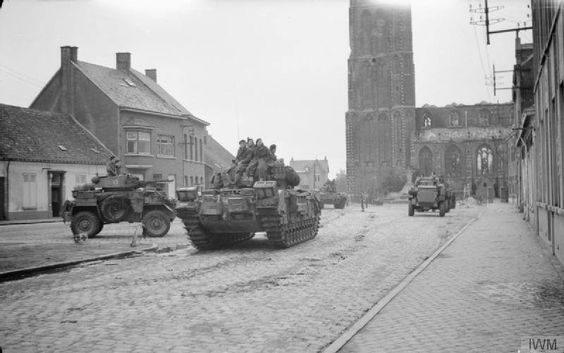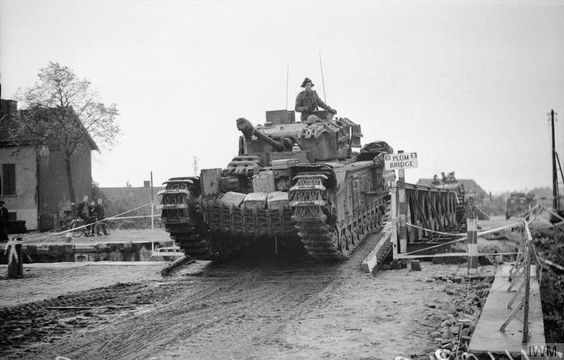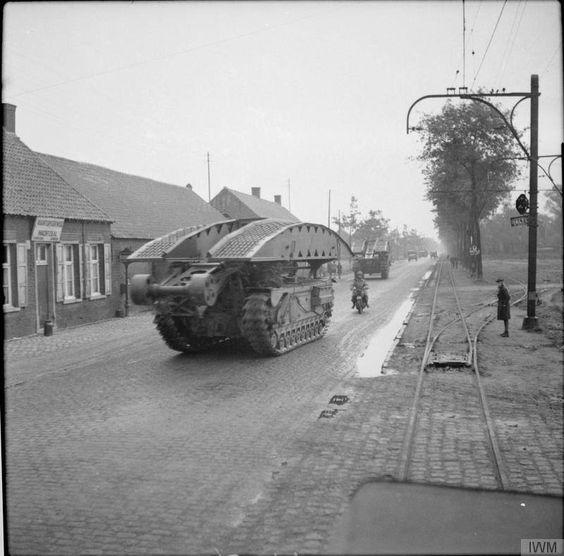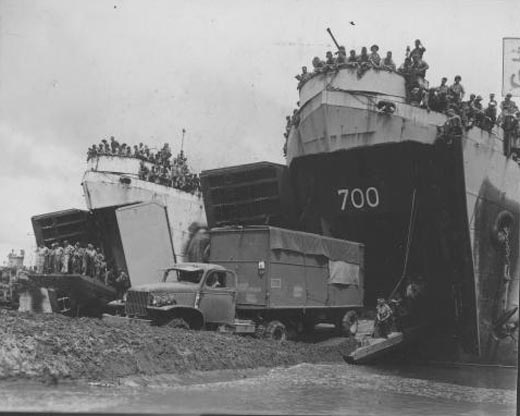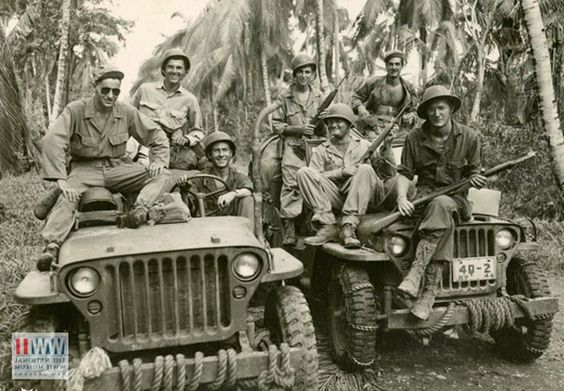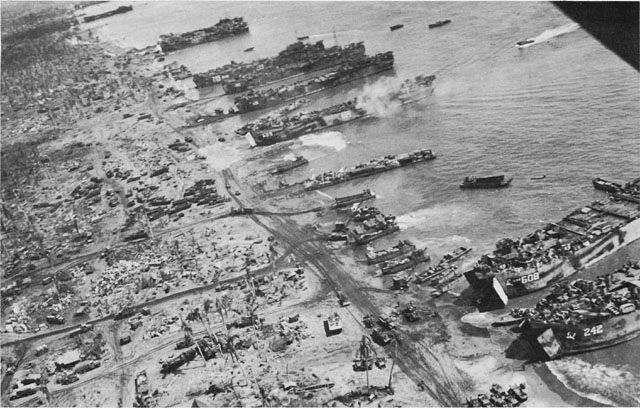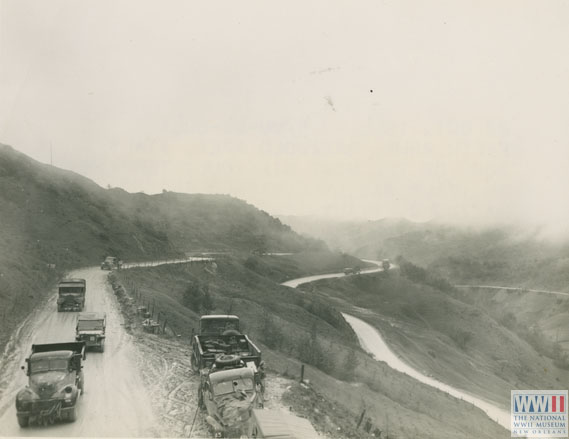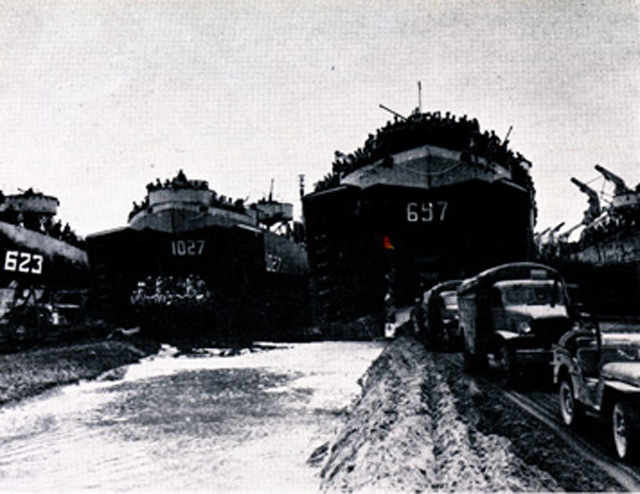Air Operations, Carolines
Pairs and trios of 30th Heavy Bomb Group B-24s based on Guam attack the Yap Atoll throughout the day.
[Air Operations, CBI
BURMA- After transporting fuel to China via the Hump ferry route since June, the 7th Heavy Bomb Group returns to combat with an attack against a rail jetty at Moulmein.
- More than 40 10th Air Force P-47s attack rail targets and bridges across northern Burma as well as two bivouacs in the Indaw area and several targets of opportunity.
- 2 341st Medium Bomb Group B-25s attack two rail bridges at Pingnam.
- 8 14th Air Force P-51s attack the town area at Pingnam.
- 54 P-51s and P-40s attack numerous targets in east-central and southern China.
Air Operations, Europe
Allied air forces bomb Hamm, Neuss, Hamburg and numerous targets across the Reich by day and night. Allied losses are negligible.
RAF BOMBER COMMANDDaylight Ops:
- 100 Lancasters of No. 3 Group are sent to Neuss. This G-H raid is not as concentrated as the recent Bonn raid and bombing is scattered. The local report says that 94 houses and 3 industrial buildings were destroyed and 545 houses, 18 industrial buildings and 1 public building were seriously damaged.
- There are no losses.
- 1 Hudson is on a Resistance operation and there are 3 RCM sorties.
Minor Ops:
- 45 Mosquitos are sent to Hamburg, 4 to Wiesbaden, 3 to Düsseldorf and 2 to Cologne, 20 Lancasters and 19 Halifaxes lay mines in the Kattegat, 6 Stirlings are on Resistance operations, and there are 6 Serrate patrols.
- There are no losses.
GERMANY:
- 171 1st Bomb Division B-17s attack an industrial target in Hannover.
- 148 1st Bomb Division B-17s attack an industrial target in Brunswick.
- 353 2nd Bomb Division B-24s attack a marshalling yard at Hamm.
- 353 3rd Bomb Division B-17s attack a marshalling yard at Munster.
- 2 B-17s and 1 of 722 VIII Fighter Command escorts are lost
GERMANY:
- 9th Air Force fighter pilots down 24 Luftwaffe fighters between 1445 and 1825 hours.
ITALY:
- Because of bad weather, XXII TAC aircraft are only able to provide 20 support missions throughout the day.
Air Operations, East Indies
- FEAF B-25s attack Ternate Island in the Molucca Islands and dumps and artillery batteries at Piroe Bay also in the Molucca Islands.
- FEAF fighter-bombers attack the Amahai and Kairatoe airfields on Ceram, and targets of opportunity around Binnen Bay in the Molucca Islands.
- 18th Fighter Group P-38s conduct the first tactical napalm mission of the Pacific War when they drop 75-gallon napalm tanks on oil stores at Boela, Ceram.
Air Operations, New Guinea
V Bomber Command A-20s attack Japanese Army positions and camps along the Metimedan and Sawar rivers.
[Air Operations, Philippines
- Task Group 77.4 carrier aircraft mount 242 effective sorties in support of US 6th Army ground forces on Leyte.
- FEAF B-24s attack the Lahug airfield on Cebu, the Matina airfield on Mindanao, and the Opon airfield on Mactan, and Cagayan and Likanan.
- B-25s and P-38s attack shipping in the Sulu Archipelago and Mindanao.
- Task Unit 77.4.1 carrier aircraft attack Japanese aircraft on the ground at the Lahug airfield on Cebu and the Opon airfield on Mactan.
- Carrier aircraft from Task Group 38.2 and Task Group 38.3 cover the Leyte invasion fleet.
- 4 VF-35 F6Fs down a D3A 'Val' dive bomber near Dinagat at 0700 hours.
Battle of Leyte Gulf
The main units of the Japanese Fleet sail from Brunei. The other two squadrons which are to take part in the operation are already at sea and approaching the Philippines from the north. The plan is for Ozawa's carriers to draw off the main American forces to the northeast while the battleships and cruisers pass through the San Bernardino and Surigao Straits to get among the invasion transports and their comparatively vulnerable escorts. Ozawa has one large and one small carrier, 2 seaplane carriers and 2 hybrid carrier-battleships as well as smaller vessels. They have only 100 aircraft with inexperienced pilots. The Center Force which is intended to pass through the San Benardino Strait is let by Adm Takeo Kurita from Brunei and includes 5 battleships, with the giant Yamato and Musashi among them, 12 cruisers, almost all heavy, and 15 destroyers. The Southern Force under Shoji Nishimura also sails from Brunei with 2 battleships, a cruiser and 4 destroyers. They are to be joined in the Surigao Strait by Kiyohide Shima's 2nd Striking Force now approaching the Philippines from the northwest. This group is composed of 3 cruisers and 7 destroyers. Although one group of TF 38 has left to replenish, Halsey still has 12 carriers and 6 battleships and Kinkaid has 18 escort carriers and the 6 older battleships which have been supporting the landings. Only in cruisers is there anything like an equality in numbers. In destroyers the Americans have three times the Japanese force.
[Battle of the Atlantic
U-985 is badly damaged by a mine in the North Sea, but manages to make to the port of Kristiansund South. She is found to be beyond repair and is written off November 15.
| Class | Type VIIC |
| CO | Kapitänleutnant Heinz Wolf |
| Location | North Sea |
| Cause | Mine |
| Casualties | Unknown |
| Survivors | Unknown |
Diplomatic Relations
The French provisional government under Gen de Gaulle is recognized de jure by Great Britain, the USA and the USSR.
[Eastern Front
The armies of the 1st Baltic Front and the 3rd Belorussian Front, which have succeeded in breaking through the advance defenses of East Prussia, are halted in front of Insterburg by determined German resistance. The positions in this sector of the front will now remain almost unchanged until the end of January 1945.
In Yugoslavia, with the fall of Sombor, southwest of Subotica, Allied forces control a large part of the east bank of the Danube as far as the Hungarian town of Baja.
NORWAYNikel has fallend to the Soviet 367th Rifle Div. The second phase of the Soviet offensive has forced the German XIX Mountain Corps to withdraw to Kirkenes, and the 163rd Infantry and 3rd Mountain Divs to withdraw southwest toward Nautsi and Ivalo.
EAST PRUSSIAThe 3rd Panzer Army launches a counterattack around Gumbinnen, which inflicts heavy losses on the 11th Guards Army and halts the Soviet advance.
YUGOSLAVIAThe Soviet 57th Army captures Zemun as it advances from Belgrade.
In the far north advance units of the Russian 14th Army from the Karelia Front reach the Norwegian border.[MORE]
[Italy
Persistent rain hampers Allied movements, but the Allied units continue to advance in the different sectors. On the Adriatic coast, units of the Canadian I Corps seize Cervia and Pisignano.
[Pacific
- The US submarine Sea Dog (SS-401) sinks the Japanese supply ship Muroto (4500t) south-southwest of Kagoshima and the gunboat Tomitsu Maru (2933t) south of Akuseki Jima.
- The British submarine Tantivy sinks the Japanese Communication Ship No.137 (200t)in Makassar Strait.
Philippines
On Leyte the 1st Cav Div of X Corps mops up the city of Tacloban and captures the hills to the southwest. Units of the 24th Inf ?Div, supported by artillery and naval guns, capture the area of Pawing. In the XXIV Corps sector, further south near Dulag, after an intensive all-night barrage, units of the 96th Inf Div recapture the positions across the Labiranan River lost on the previous day. Other units take the villages of San Roque, Tigbao and Canmangui, pushing on inland toward Burauen. The most notable gains are by the 7th Inf Div on the right flank who advance about 2 miles toward Abuyog.
US carrier-based aircraft sink the Japanese auxiliary submarine chaser No. 15 in the Leyte area.
[Western Front
The Canadian 3rd Div completes the capture of Breskens on the south bank of the Scheldt estuary while the Canadian 4th Arm Div reaches Esschen.
To the east, in the British 2nd Army sector, the XII Corps opens an offensive in the region east of the Meuse. The 15th Div makes for Tilburg, while the 7th Arm and 53rd Divs, followed by the 51st, head for 'sHertogenbosch.
Operations leading up to the Allied offensive against the Rhine begin with the drawing up along the Allied front of the 3 American armies which are to take part, from north to south, the 1st, 9th and 3rd.
In southern Holland the British XII Corps is attacking toward Tilburg.
[Images from October 22, 1944
|
|
|
|
|
|
|
|
|
|
